Standing halfway up Mount Otowa, Kiyomizu Temple offers a sweeping cityscape for you. Known for its three-story pagoda and wooden stage, Kiyomizu Temple is one of the most representative temples in Kyoto. By 1994, the temple was designated as a UNESCO World Heritage Site.
Aside from its natural beauty, you can also pray for a romantic blessing at Jishu Shrine, for physical fitness and academic success by drinking water from Otowa Waterfall, and for a safe delivery at Koyasu Pagoda.
Kiyomizu-dera Temple can be one of the most appealing attractions in Kyoto. A more professional tour guide to Kiyomizu Temple in this post can help you better start an unforgettable and enjoyable exploration in Kyoto.
Table of Contents
Kyoto Kiyomizu-dera Temple Facts
Why Kiyomizu-dera Tops Every Kyoto Itinerary
History of Kiyomizu-dera Kyoto
Architectural Marvels of Kiyomizu Temple Kyoto
Top Attractions at Kiyomizu Temple
Festivals & Cultural Experiences
Best Time to Visit Kiyomizu-dera
How to Get to Kiyomizu-dera
Essential Guide for Visiting Kiyomizu Temple
Nearby Attractions
1-Day Kiyomizu-dera Tour Sample Itineraries
FAQs about Kiyomizu-dera Temple Kyoto
Kyoto Kiyomizu-dera Temple Facts
Japanese name: 清水寺
Address: Higashiyama-ku, Kyoto, Japan
Opening hours: 6:00 am-6:00 pm (except for some special events)
Closed: No holidays
Entrance ticket:
500 yen for adults (aged over 16 years old)
200 yen for students (aged from 6 to 16 years old)Suggested visit duration: 1-2 hours
Best time to visit: Spring and autumn
Why Kiyomizu-dera Tops Every Kyoto Itinerary
UNESCO site and one of the most famous temples in Japan
Its three-story pagoda is one of the tallest in Japan.
Its wooden stage offers some of the best views of Kyoto.
Hot spot in Kyoto for cherry blossom and autumn foliage viewings
Close to the center of Kyoto downtown
History of Kiyomizu-dera Kyoto
As the oldest temple in Kyoto and one of Japan’s oldest temples, Kiyomizu Temple was founded in 778 AD by Enchin Shonin, a priest from Nara. This 1,200-year-old temple is dedicated to Kannon, the Goddess of Mercy. It is said that the goddess can bless worshipers to be lucky and prosperous. You may genuinely feel peaceful and respectful when praying. Embarking on a cultural and historical exploration in this temple can be one of the top things to do in Kyoto.
The Kiyomizu-dera Temple has undergone some reconstructions 10+ times, including after the 1629 Onin War. By 1994, the temple was designated as a UNESCO World Cultural Heritage Site. Although going through all these rebuilds, Kiyomizu Dera Temple still maintains its magnificence and brings visitors breathtaking views, attracting numerous people to get closer to Japan’s history.
Architectural Marvels of Kiyomizu Temple Kyoto
The most magnificent building belongs to the Kiyomizu Stage. This wooden complex is supported by 168 zelkova pillars – no nails used! Standing 13 meters above the ground, you are offered stunning views of the surrounding greenery, changing seasonal beauty, as well as the Kyoto cityscape.
There is a striking Three-Story Pagoda with an exquisite design inside Kyoto Kiyomizu Temple. Characterized by its bright red color, this pagoda can be an iconic landmark of the temple.
Top Attractions at Kiyomizu Temple
Three-Story Pagoda
The 31-meter-tall pagoda is not only a prominent and iconic landmark in Kiyomizu Temple, but it is also one of the tallest pagodas of this kind in Japan. Featuring its dark vermilion color, this Three-Story Pagoda offers great views, which is also the perfect natural backdrop for the stunning Kyoto skyline.
Kiyomizu Stage
The most iconic spot inside the temple belongs to the Kiyomizu Stage, built with 139 columns and without a single nail in its structure. And you can gain panoramic views of Kyoto when standing on this wooden stage complex. There is an iconic Japanese idiom, "Jump off Kiyomizu", which was used as the same meaning as “take the plunge” in English.
Niomon Gate
Featuring its bright color, Niomon Gate is the main entrance of Kiyomizu-dera, standing around 14 meters tall. The gate was destroyed in 1469 and restored in about 1500, carrying a profound historical significance. Also, it has become a unique feature after its refurbishment in 2003.
Otowa Waterfall
Kiyomizu-dera Temple’s name originates from Otowa no Taki waterfall, and the clear water flowing from the waterfall used to be called Konjiki-sui. Flowing through the temple’s ground, the waterfall splits into three streams. Known for its pureness, Otowa Waterfall is said to offer health, longevity, purification, or academic success blessings.
Jishu Shrine (Love Shrine)
Dedicated to the love deity, Okuninushi, Jishu-Jinja Shrine works best in love and relationships. Therefore, it is especially popular among couples and people who are seeking a romantic encounter. The most distinctive features belong to the love stones. It is said that your wish will come true if you step from one stone to another with your eyes closed. However, it’s currently closed for renovation. Check the official website for live updates.
Koyasu Pagoda
Kiyomizu-dera Koyasunoto Pagoda is a magnificent building, standing 15 meters tall within the temple grounds. And a statue of the thousand-armed Kannon is enshrined inside Koyasu Pagoda, who is the guardian of childbirth and shields safe delivery. As an important cultural property in Japan, the pagoda is regarded with reverence.
Festivals & Cultural Experiences
Annual Highlights
Kiyomizu Dera Festival (April): Kabuki performances are held.
Seiryu-e Dragon Festival (March/September): The blue giant dragon will show up to celebrate these seasons, coming with a spectacular dance.
Nativity (April): To celebrate the birth of Buddha, the festival was born to commemorate him, with sweet tea.
Founder’s Death (May): A memorial service is held to honor the founder of Kyoto Kiyomizu Dera Temple, with a series of tea ceremonies.
Summer Special Night/Sennichimairi (August): Special viewing of the inner sanctum of the main hall is allowed.
Kiyomizu-dera Night Illumination: Spring/autumn light-ups highlighting the stage and gardens offer a romantic and mysterious atmosphere for your visit.
New Year’s Eve Bell (December): Around New Year’s Eve, the bell will be rung 108 times to remove the desires and welcome the New Year. During these periods, you can enjoy the beauty of trees and buildings in the temple after nightfall.
Hands-On Cultural Activities
Diverse kinds of Goshuin stamps (御朱印) are available in Kiyomizu-dera Temple, which are regarded as meaningful proof of visiting the temple. Divine Omikuji fortune can be one of the most anticipated experiences during your time in Kyoto.
Put on kimonos, attend a tea ceremony held in traditional tea houses nearby, and experience a tea ceremony to deeply delve into Japanese traditional culture.
Kyoto food is like a brilliant pearl, waiting for your discovery. Special Kyoto cuisine, especially the Obanzai and Kaiseki dining, must be the typical Kyoto flavor you cannot miss.
Best Time to Visit Kiyomizu-dera
Spring and autumn can be the best seasons to visit Kyoto Kiyomizu Temple. By late March or early April, spring comes to Kyoto. Numerous visitors are drawn to appreciate the cherry blossoms in Kyoto and immerse themselves in the pink sea. Layers of cherry blossom bring you travel through time into Kyoto spring scenery thousands of years ago. The temple creates a romantic atmosphere and makes you linger with sakura rain as the breeze rises gently.
Recommended Japan Cherry Blossom Tours:
When autumn nears Kyoto, it brings the most dreamlike moment of the year. Maple leaves all over the mountain are turned into gradient orange and red, which creates a breathtaking masterpiece with vermilion buildings. In the evening, the temple becomes more romantic and mysterious under the lights and shadows. The best Kyoto autumn foliage viewing period starts from mid-November to early December, when you can appreciate ginkgo trees in addition to maple trees.
How to Get to Kiyomizu-dera
From Kyoto Station
Kyoto City Bus 100/206 to Goja-zaka or Kiyomizu-michi bus stop (10-minute walk)
Kyoto Bus Route 18 to Gojazaka (10-minute walk)
From Fushimi Inari Shrine
JR Nara Line to Tofukuji Station, then transfer to the Keihan Main Line to Kiyomizu-Gojo Station (20-minute walk)
From the Gion District
A 20-minute walk from Gion
Short bus ride from Gion to Goja-zaka or Kiyomizu-michi bus stop (10-minute walk)
Essential Guide for Visiting Kiyomizu Temple
Opening Hours & Tickets
General opening hours: 6:00 am-6:00 pm (sometimes close at 6:30 pm)
Special events (spring/summer/autumn special night viewing): 6:00 am-9:30 pm (close at 9:00 pm)
Tickets
500 yen for adults (aged over 16 years old)
200 yen for students (aged from 6 to 16 years old)
Insider Tips
1. 6:00-8:30 am or 90 minutes before closing to beat the crowds and for a tranquil trip
2. Golden Hour: 7:00–9:00 am for soft light on the stage
3. Pair kimonos with geta sandals for authentic shots
4. Comfortable Shoes for hiking winding mountain roads
5. Drink water gushing from Otowa Waterfall for good luck. But avoid drinking more than one stream, or it will split your luck.
Nearby Attractions
Ninenzaka and Sannenzaka Streets
Situated up to the Kiyomizu-dera Buddhist Temple, Ninenzaka and Sannenzaka are two ancient valleys in Kyoto, with many typical Japanese-style buildings. With a lot of souvenir shops and eateries along the street, they are perfectly suitable for daily strolling. In addition, they are also ideal places to encounter Japanese natives wearing traditional kimonos.
Kodaiji Temple
As one of the Zen Buddhist temples, Kodaiji Temple was built in 1606 to commemorate a historical figure in Japan, Toyotomi Hideyoshi. The temple was built in lavish style and surrounded by picturesque gardens in various styles. There are special night illuminations in different periods as well.
Yasaka Shrine
Renowned as Gion Shrine, Yasaka Shrine is one of the most famous shrines in Kyoto. The shrine is frequently visited by tourists owing to its location between the Gion and Higashiyama districts. Yasaka Shrine is famous throughout Japan due to its summer festival. And it attracts tons of people during the Kyoto cherry blossoms season due to neighboring Maruyama Park, one of the best spots for viewing sakura in Kyoto.
Maruyama Park
Near the Yasaka Shrine, Maruyama Park is one of Kyoto's top hanami spots, and it will be crowded and busy during the Kyoto cherry blossom season. Also, it provides explorers with an ideal shelter from bustling city life. As night nears, it will spice it up with night illumination.
1-Day Kiyomizu-dera Tour Sample Itineraries
No matter for a Kyoto day trip or an in-depth Kyoto tour, there are a lot of places to go to enrich your cultural experiences in Kyoto. If you intend to embark on your Kyoto tours from Kiyomizu-dera Buddhist Temple, we have prepared some Kyoto itineraries for your inspiration.
Option 1:
Morning: Kiyomizu Temple → Sannenzaka → Kodaiji Temple
Afternoon: Chionin Temple → Gion tea houses → Yasaka Shrine sunset
Option 2:
Morning: Kiyomizu Temple → Sannenzaka → Ninenzaka → Hokanji Temple (Yasaka Pagoda) → Ishibe Koji Alley → Yasui Kompiragu Shrine
Afternoon: Yasaka Shrine → Maruyama Park → Chionin Temple → Hanamikoji Street → Kamo River
Option 3:
Morning: Kiyomizu Temple → Sannenzaka → Ninenzaka → Yasaka Koshin-do Temple
Afternoon: Yasui Kompiragu Shrine → Hanamikoji Street → Yasaka Shrine → Shirakawa Canal
FAQs about Kiyomizu-dera Temple Kyoto
1. Is Kiyomizu Temple free to visit?
No, but entry to the main hall is ¥400, and night views cost the same. Besides, it is ¥500 for adults and ¥200 for students.
2. How long to spend at Kiyomizu-dera Temple?
2–3 hours for the core areas is recommended to visit Kiyomizu Temple.
3. Is it better to go to Kiyomizu-dera in the morning or at night?
Mornings and nights have different characteristics. Early morning is for a tranquil trip, and night is for night views and special illuminations.
4. What is the jump from Kiyomizu?
It is an idiom in Japanese, which means to take a big risk. The idiom “burn one’s boats” in English shares a similar meaning to this saying.
5. Is night illumination worth visiting?
Yes. Special night illumination in Kiyomizu Temple is worth visiting and will bring you a unique experience. There is special access to normally restricted areas.
6. Is Kiyomizu-dera stroller-friendly?
Not really. The approach is steep, and there are stairs to the temple. A baby carrier is better for going up and down with stone steps.
Plan Your Kyoto Trip with Hi Five Trip
Embarking on your Kyoto trip from Kyoto Kiyomizu Temple can be a smart choice. For more Kyoto tour packages, some of the Kyoto travel itineraries from Hi Five Trip are provided for your reference:
If any interests, feel free to contact us. And our travel experts will assist you in customizing your Japan trip.

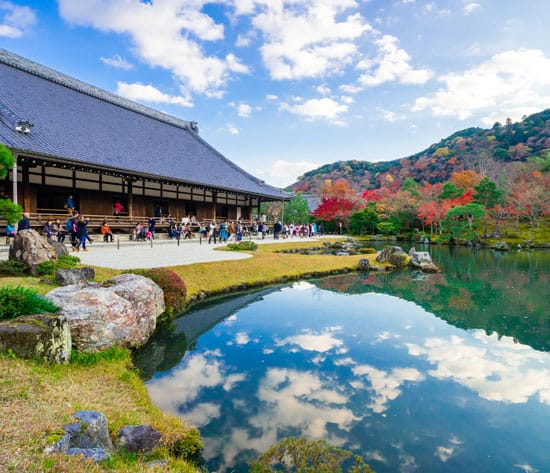
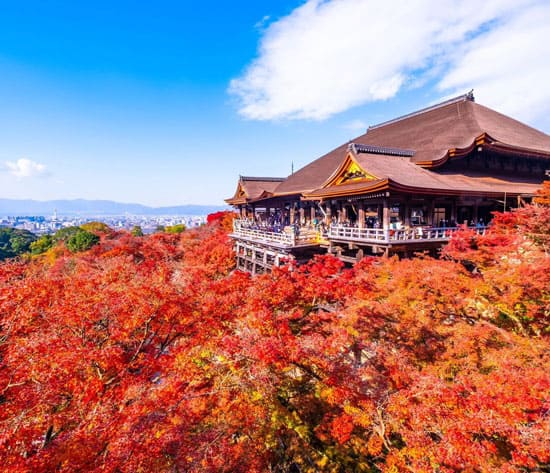
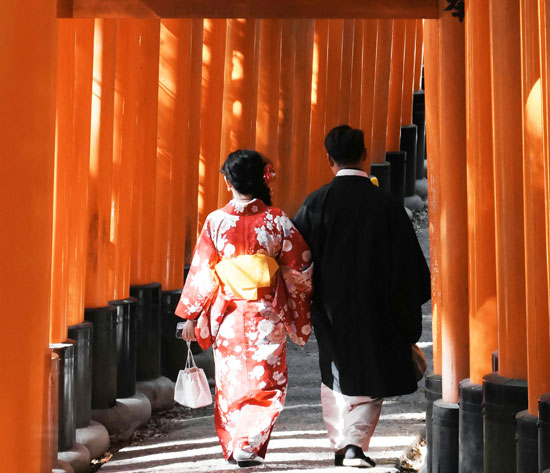
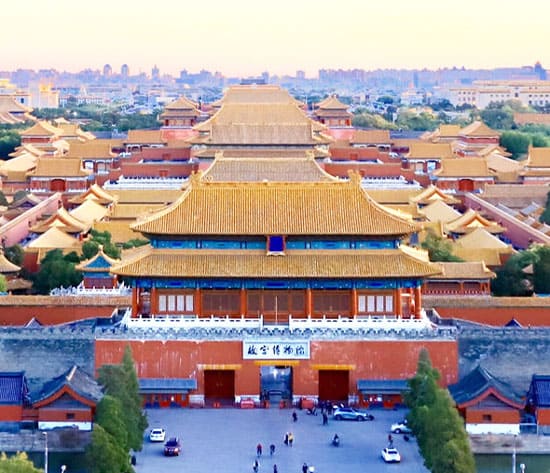
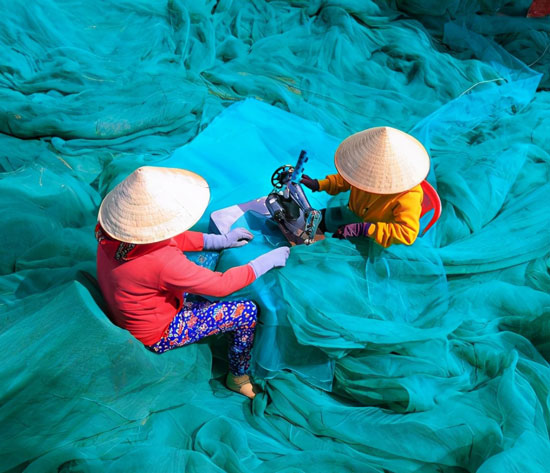
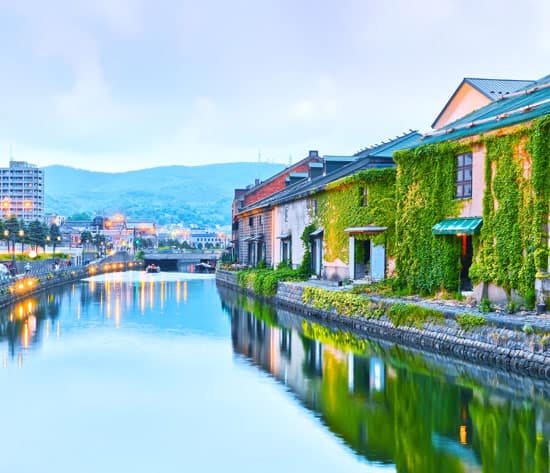
Have a Question?
You might see your comment appear on this page, but your email address and full name will not be published. Your personal information will remain confidential. Our Asia travel experts will get back to you as soon as possible. Required fields are marked *